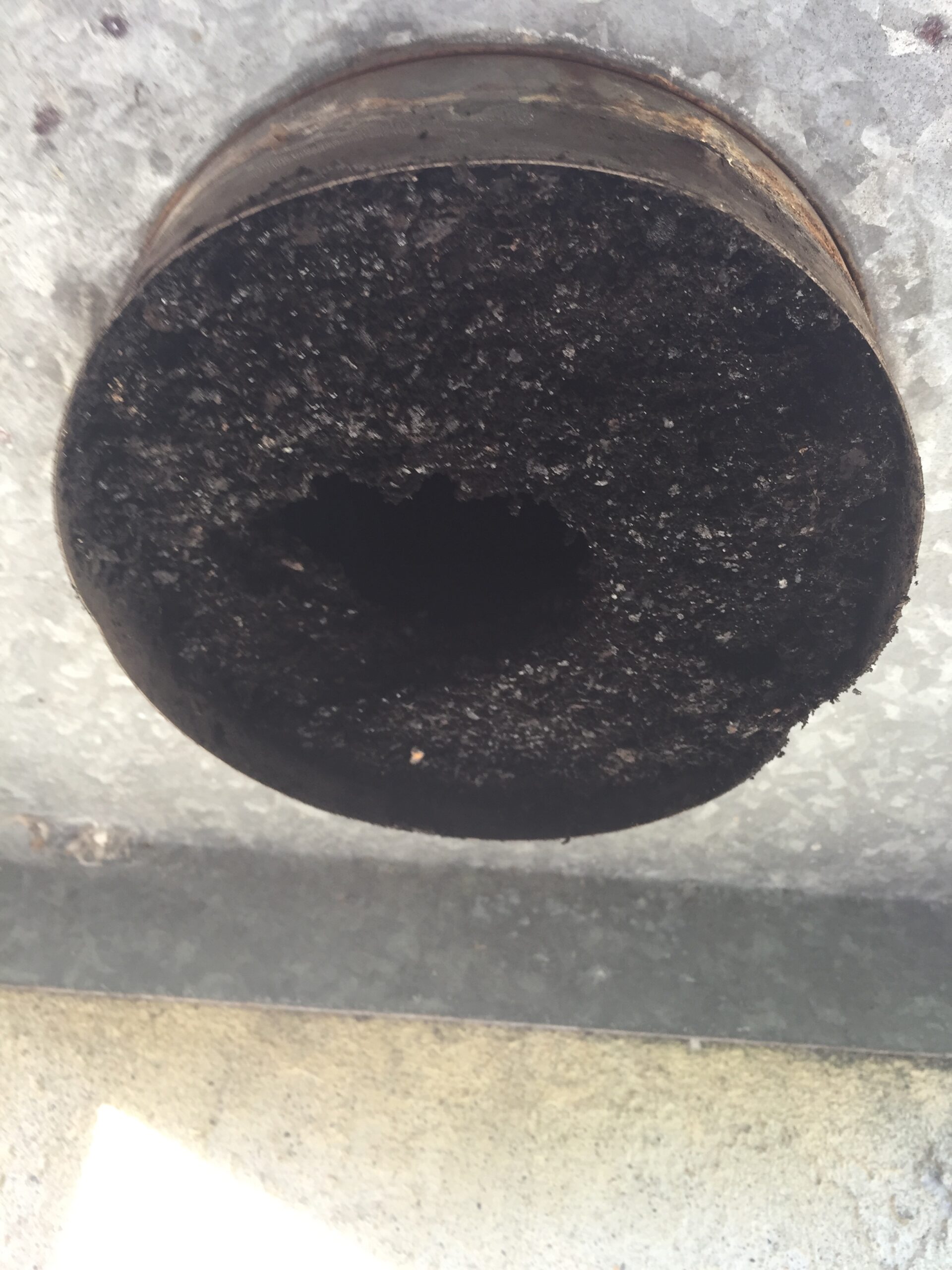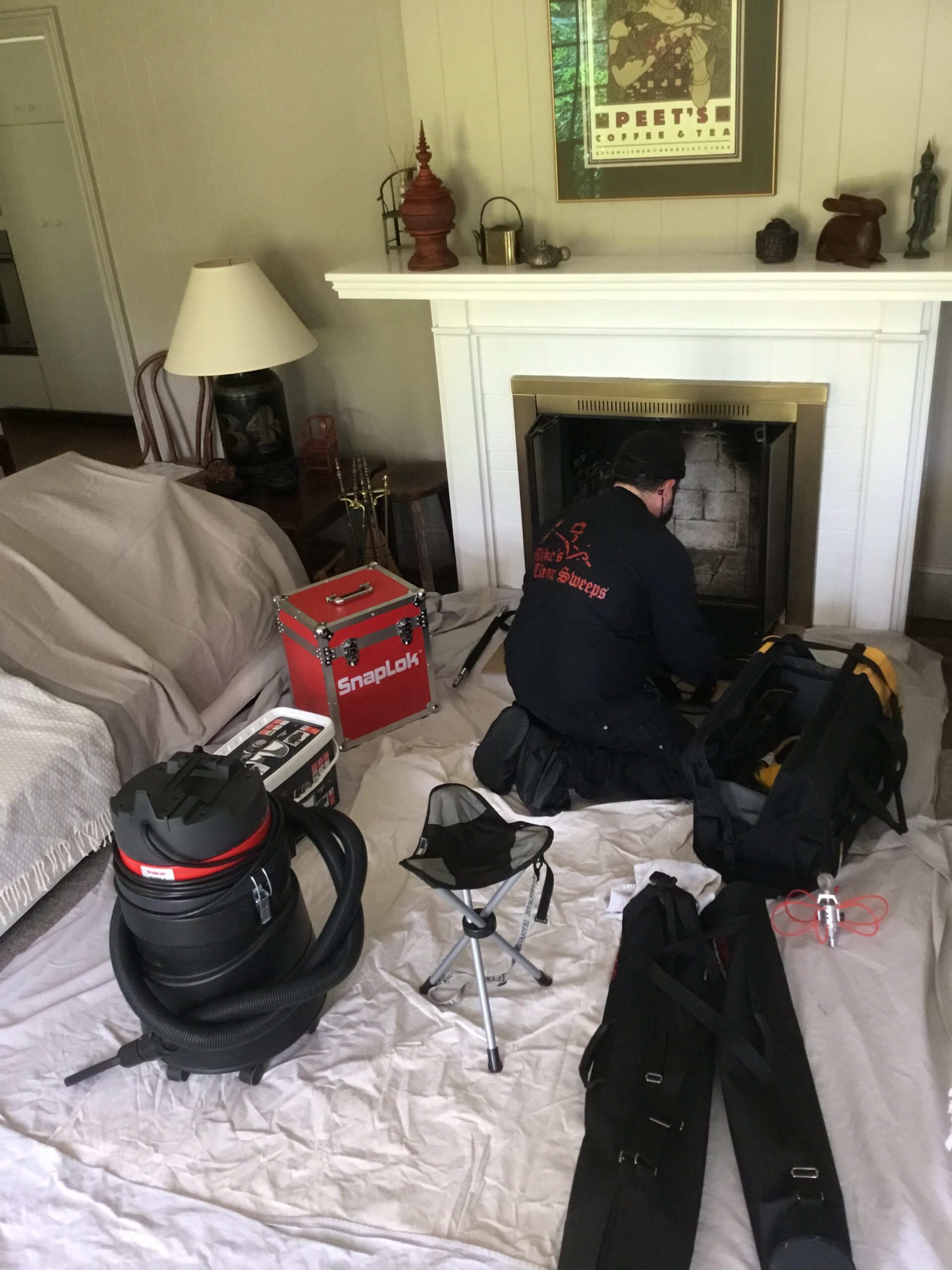One by-product of incomplete combustion is creosote. Although it comes in many forms, creosote is a flammable deposit that accumulates in the passageway that leads from the fireplace to the chimney top. This passageway, called the flue, is typically constructed with terracotta tiles that are mortared into place within the masonry structure. If enough creosote is present and the ignition point of the residue is reached, a chimney fire will occur. The sound produced is often likened to a jet taking off as a chimney’s worth of flammable material ignites and flames shoot out the chimney. Sometimes chimney fires are less spectacular and go unnoticed until damage is found by a technician with a chimney camera.

While removing the creosote from the system annually decreases the likelihood of a chimney fire, we here at Mike’s Clean Sweeps have to sleep at night, and, in an effort to protect the customers that choose our services, we no longer provide routine cleanings without an inspection. The national organizations that lead in the training and certification of chimney technicians devote a great deal of time to combing through the data on structure fires. It is our mission to educate the public regarding the fact that structure fires originating from an unseen defect in the chimney flue are entirely preventable if homeowners choose to hire companies that follow the industry’s standards of care.
Creosote can be found in several forms, the variety of which can be present in the same chimney. Often found with components of soot deposits and fly ash, many variables affect the kind and amount of creosote accumulation, such as smoke density, average flue gas temperatures, and residence time. Creosote can be soft and dusty accumulations (if soot is prevalent), flaky granules, moist and tarlike, or hard, slag-like deposits.
Evaluating the creosote is important in ascertaining whether a chimney fire has occurred. Puffy, expansive creosote indicates the high-temperature at which creosote burns during a chimney fire. Smaller, less dramatic chimney fires often cause the formation of Stage 3 or glazed creosote. Dense, hard, shiny black deposits are a form of tar glaze that has condensed on to the chimney walls and had the moisture driven off. Because most of the flame-producing hydrocarbons are still present, these deposits retain a high potential energy content. If the ignition point of Stage 3 creosote is reached, it will burn with great intensity at extremely high temperatures. Glazed creosote cannot be removed by traditional chimney sweeping alone. It must be chemically treated prior to removal, and, considering that we cannot know what kind of creosote you have until we have performed an inspection, the application of chemical agents and resweeping comes at an additional cost. We will be happy to advise as to avoiding the build-up of glazed creosote while on-site. Essential in this regard is selecting and properly storing seasoned wood as well as an annual maintenance and inspection schedule.

Other signs that you have had a chimney fire include cracked terracotta lining tiles, burst seams of chimney pipe, a vibrating connector and/or stove, smoke and odors noticeable in adjoining rooms or the attic, and the heat-driven discoloration of top-most flue tile and termination cap. With flue temperatures during a chimney fire exceeding 2000 degrees Fahrenheit, flames can travel through cracks in chimney walls, igniting the roof or other parts of the house, as well as surrounding vegetation. The excessive heat of these fires routinely damage chimney liners, crack chimney walls, and may also transfer significant heat to wood stud joists, rafters, or adjoining combustible framing members. Due to a process called pyrolysis, whereby moisture is gradually driven from combustibles over time and the ignition point is reduced, these concealed combustibles can ignite without the direct exposure to spark or flame. This situation is exceedingly dangerous since the heat could be contained in a confined area, hidden from sight.
We always make it a point to remind folks to maintain proper burning practices. Setting alight items such as trash, cardboard, or trees over the holidays can cause extremely hot, dirty fires in excess of 900 degrees Fahrenheit. Using your fireplace as though it were an incinerator can cause chimney fires since these improperly burned items burn at hotter temperatures than seasoned firewood.
While cleaning a chimney is a useful service, cleaning does not make a fireplace safe to use. In fact, the lack of Level 2 Chimney Inspections with transfers of property per NFPA 211 means that many new homeowners are unknowingly operating fireplaces that are potentially hazardous to use. Our Level 1 Chimney Inspection, which includes a cleaning, a flue scan, and three page report with six images, is typically sufficient to determine whether your fireplace is fit for use. Call us today!